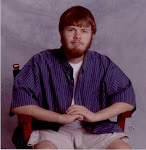The biggest of storms – hurricanes – are named, and Matt started writing the list of each major hurricane for the
Over the years the intervals between an old list and a new list got shorter and shorter. He went from creating his lists on paper to typing his lists on the computer (saving us reams of paper). I still have the files containing Matt’s lists on my computer, and open them on occasion to just marvel at the thoroughness. Even typing with 12 font the list of just one subject can take several pages.
His desire to memorize each list brought a wealth of information and Matt could spout off details at will. “How many planets are there, Matt?” Matt would not only answer with the number but also with the distance of each planet from the sun, the number of moons and rings, and the characteristics of each planet’s specific atmosphere. No wonder Matt did so well in school. Most classes ask students to know lists – History, for example, requires a student to know events and their dates, and this was right up Matt’s alley.
Matt also wrote lists of video games and movies. Some of his favorite video games were battle / war type games and race-car games. We soon began seeing lists of weapons, armored vehicles, and body gear worn by the soldiers along with new drawings that contained details of each item. Various types of race cars found their way into his art as well – very detailed race cars. The art and the lists went hand-in-hand. Sheet after sheet of paper contained his lists (many typed on the computer) – each list meshing with drawing after drawing of each item. Favorite movies were put on pause and captured in his art. Lists were made containing each important film.
All of this may seem curious – and it was. Matt’s mind was organizing, filing away each bit of information into a specific category and it was tediously hard work. Many autistic individuals perform similar rituals and most people brush it off as a quirk of behavior. A person can train their eyes to see much deeper into the ritual of this behavior. After all, everyone has a special method of learning and we encourage their gifts. Matt’s method of learning used listing and drawing. He still uses this method for learning new things. His focus is intense. He must see the words. He must put them into categorical lists. He must see each item – as detailed as possible. He must train his hands to draw from memory. This is the sequence of his learning strategy. Had I seen it early on I could have advanced his learning tremendously.
Making sentences was the most difficult aspect of school. Matt had no desire to add words that could not describe the items of his list and these words were often left completely out. What were these absolutely useless words? If, as, it, the, at, or, to. I called them the “useless little words”. Matt had trouble with the insertion of these words into sentences for most of his school years, making English his worst subject. This area of difficulty was finally overcome by Matt’s desire to know more details on a subject and create new story lines for his art. He began reading. He copied the lines to paper first – just as he had trained his hand to draw, he trained his mind to write. He copied story after story verbatim, and this meant even the little words had to be written. As his reading progressed from simple stories to novels we saw a dramatic change in his ability to write. I would love to tell you that the teachers taught him to write, or that I taught him to write – but that would be a deviation from reality. Matt taught himself to write. The teachers helped and I helped – because we supplied him with paper, lots and lots of paper, and we supplied him with reading material – book after book. But the ability, the mechanics of the English language, came about through repeated practice - on his own terms. Make a list, make a drawing, write a story – a curious combination that required intense focus.
This is one of the reasons I find Matt to be so exceptional. He knew how to train his own brain. I had only a supporting role in his education. I always allowed him to have his curious behaviors of listing and supplied him with a forest full of paper. I still can’t believe the intensity at which he drove himself to learn. So much focus on what appeared to be the mundane was actually organizing his mind. I never really understood his needs back then, but I can see it all too clearly now. So this story is for those watching the curious behaviors of their autistic child and trying to figure out if these behaviors are acceptable or should be deterred. Watch for the connections. Observe, observe and observe. There’s a good possibility that the child is finding a way – their very own unique way – to learn. Be prepared to support the curious.


No comments:
Post a Comment